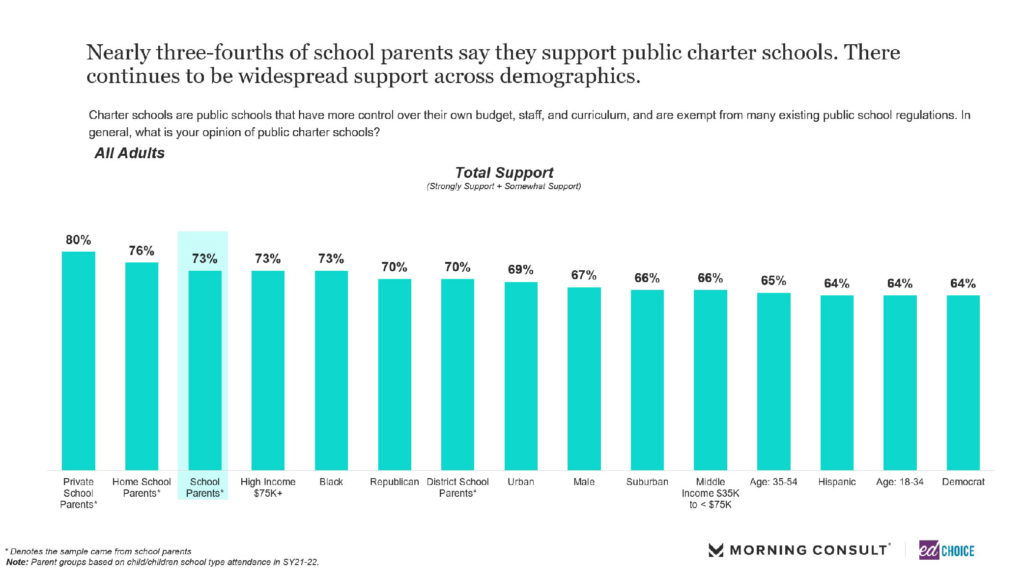EdChoice Public Opinion Tracker: Top Takeaways November 2021
We don’t often write these monthly posts in first-person, but I remember the blog I wrote and the podcast we recorded for last November’s tracker update pretty distinctly. We were a few months into the first full year of the COVID-19 era, and the data told me that parents were just tired. Pessimism abounded regarding the danger of COVID-19, parents’ interest in schooling from home, and a number of other factors. November saw a substantial drop off in a lot of these numbers before steadily normalizing in early 2021.
I’ve been curious about whether we would see the same pessimism in November of this year. Would parents be tired in the same way they were last year, or have there been enough changes in schooling from fall 2020 to fall 2021 that November would be a pretty typical month?
My interpretation of the data is that the latter is truer—though that does not at all mean we haven’t found some interesting results this month. The indicators that fluctuated wildly at this time last year remained relatively stable this time around, while a number of new questions we’ve asked offer some different insights.
For those who aren’t familiar with our monthly tracking poll we survey a nationally representative sample of American adults every month to capture snapshots and trends in public opinion regarding K-12 education. Last month (Nov. 6-12) we collected responses from 2,200 adults ages 18 and older. We received 1,199 responses from current school parents, including an oversampling of 700 school parents. This approach allows us to report more reliable information about parents’ opinions by demographic.
Below are some of the highlights that jumped out to me this month, but you can check out the full slide deck here.
1. Feelings of disruption based on the COVID-19 pandemic have been volatile in recent months, but they are still near pandemic-lows. Surveyed adults were more likely to indicate the pandemic was very disruptive to their personal and household routines in November than they were in October. At 22 percent each, though, these responses are not substantially different from what we have observed since July. In contrast, three out of 10 Americans were less likely to say COVID-19 was very disruptive to their broader community. That share (at 29 percent) was the second-lowest we have seen since we began asking this question in March 2020.
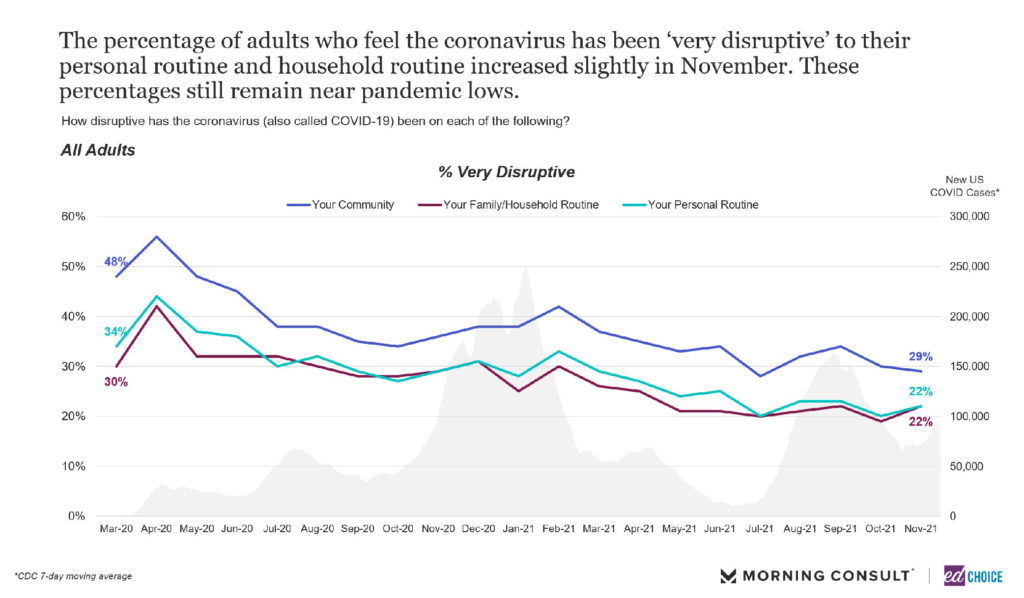
Though the national daily COVID-19 case rate began to rise from October to November, essentially the same share of parents reported their children having to quarantine in the last month due to COVID-19 (26 percent and 25 percent, respectively).
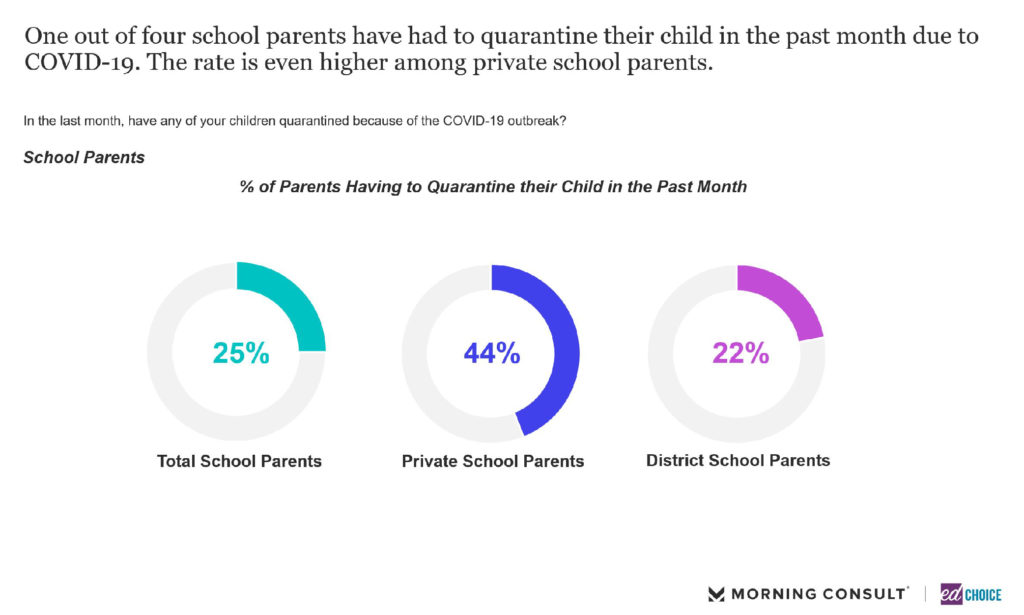
Preferences regarding masking and vaccine requirements at various educational institutions have remained fairly consistent since we started asking a few months ago, but we did see a slight decrease in favor of masking requirements. Since September, Americans’ support for mask mandates have declined by four to six percentage points depending on the person and location in question.
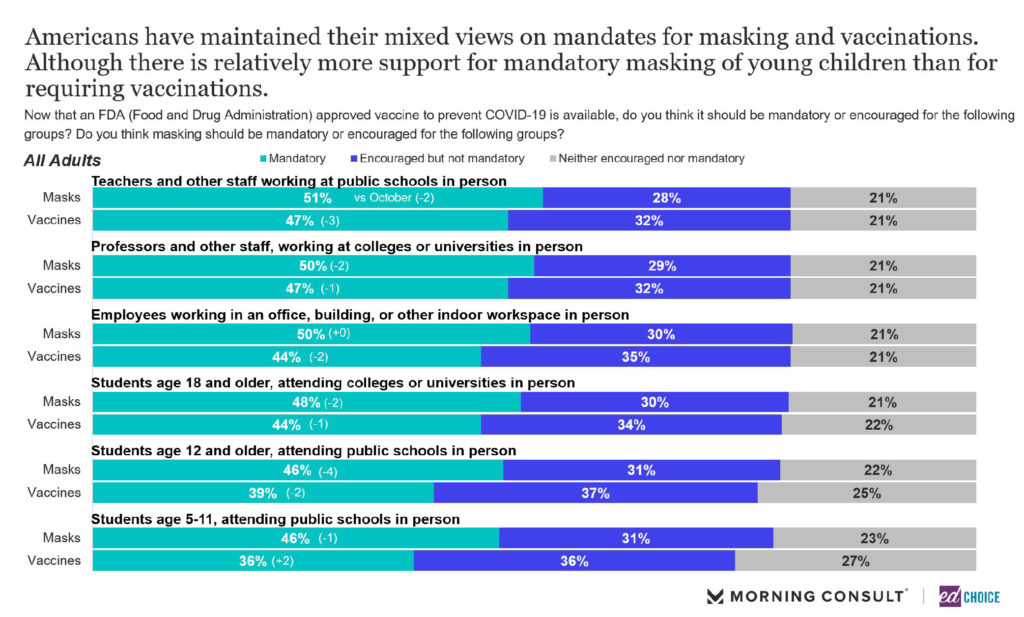
2. At the start of the school year private schools offered more schooling mode options than their district counterparts. Private school parents were about 2.4 times more likely to say their child’s school had been offering both in-person and online instruction at the beginning of the school year, compared to public district school parents. Half of private school parents and three-quarters of district school parents said their children were completely in-person at the start of the current school year.
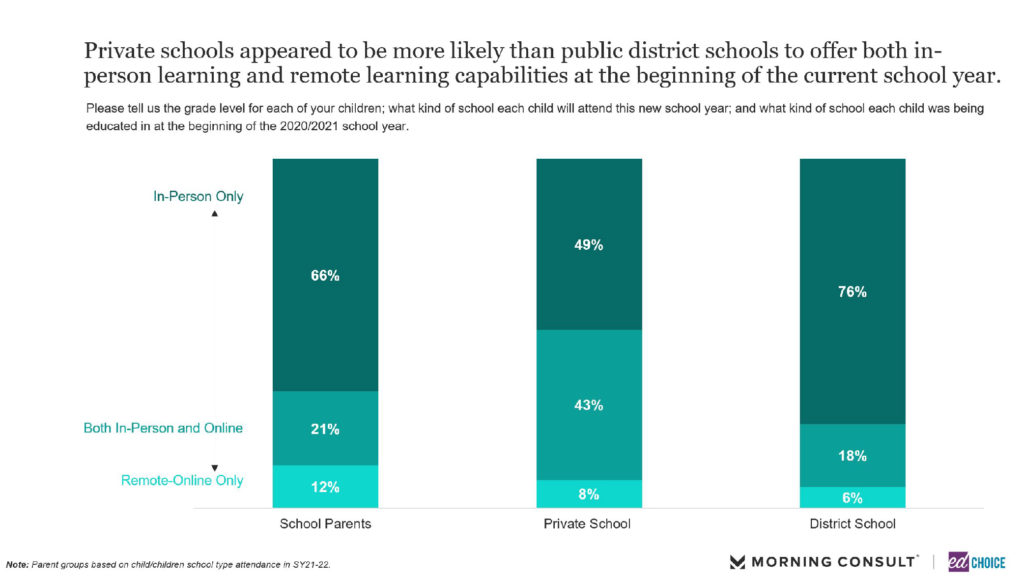
Preferences for multiple learning options remain high. That is clear based on responses to two regular questions in our monthly surveys. In November, 69 percent of parents said they think schools should provide multiple approaches to K-12 education this school year.
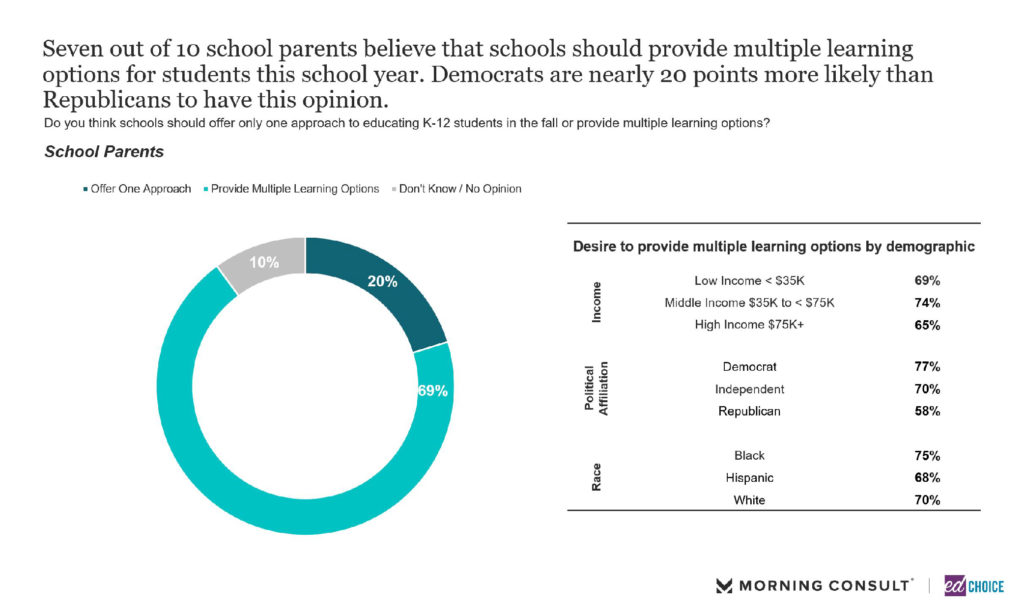
And parents continue to prefer a mix of at-home and in-person schooling for their children. Forty-four percent of parents would like their children educated at home one to four days per week, while 41 percent want schooling to take place completely outside the home.

3. Parents are more likely to believe schools should prioritize activities directly promoting classroom learning. About four out of five parents find student resources and curriculum at least “very important” for schools to prioritize right now, most of the eight options we presented. About three-quarters of parents believed communications and transportation access were at least “very important.” Masking and vaccine requirements were considerably less likely to be seen as important, somewhat reflecting preferences about such mandates as seen above.
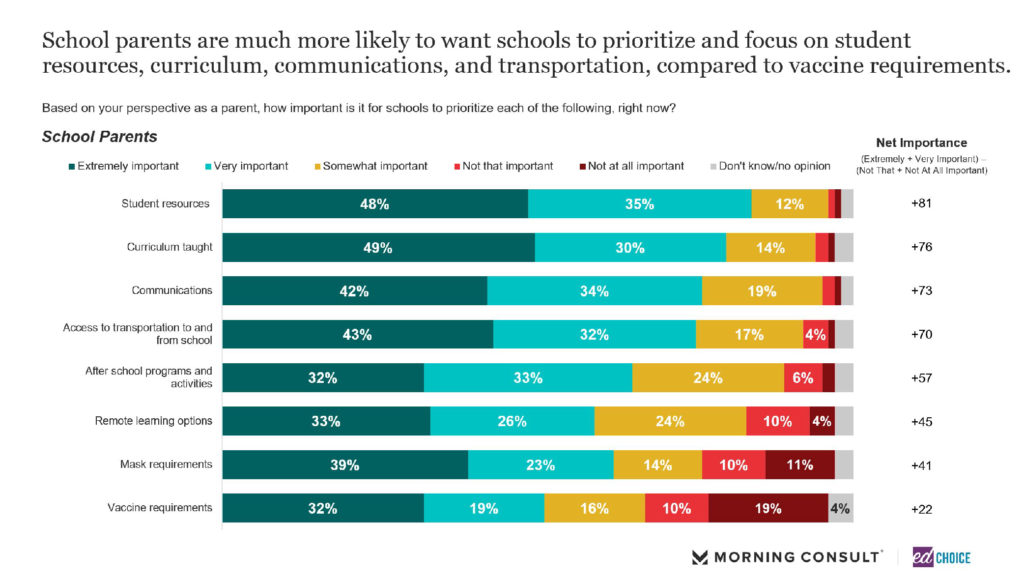
4. Parents place the most trust in teachers and other parents. Parents are likely to indicate at least some trust in a variety of groups’ abilities to make good decisions about education. Teachers, parents, and school principals were clearly the most popular groups, however. School boards and state lawmakers were the least-trusted groups.
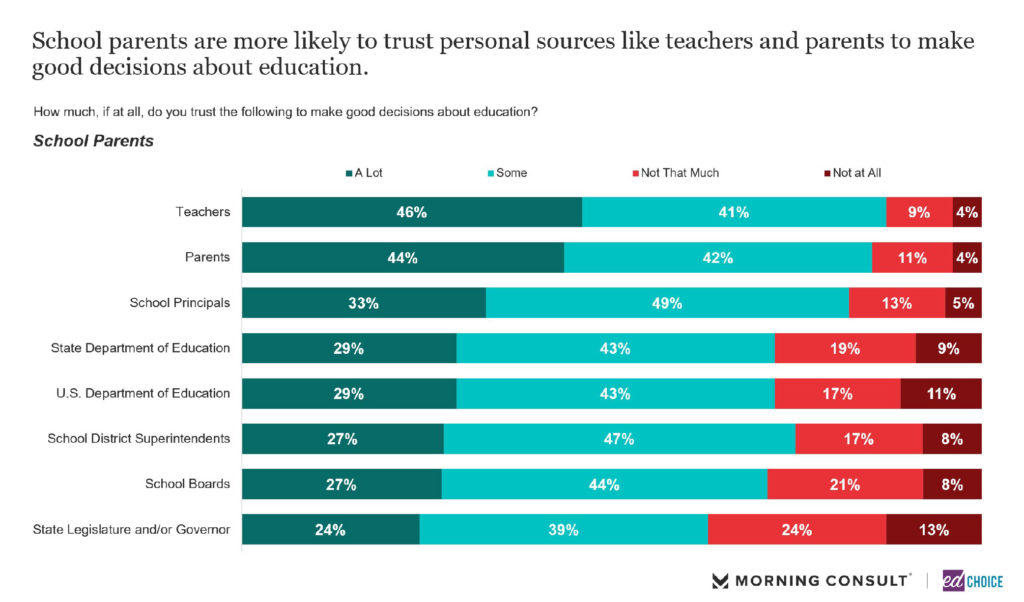
5. People are more likely to see education as a voting priority at the local and state levels compared to federal. We asked all our adult respondents their top three most important issues they consider when voting for federal, state, and local offices. The way Americans view “education issues” appears to be related to a range of demographics and what level of government they were considering, with education more likely to be named a major issue in state elections than federal and more likely in local than state.
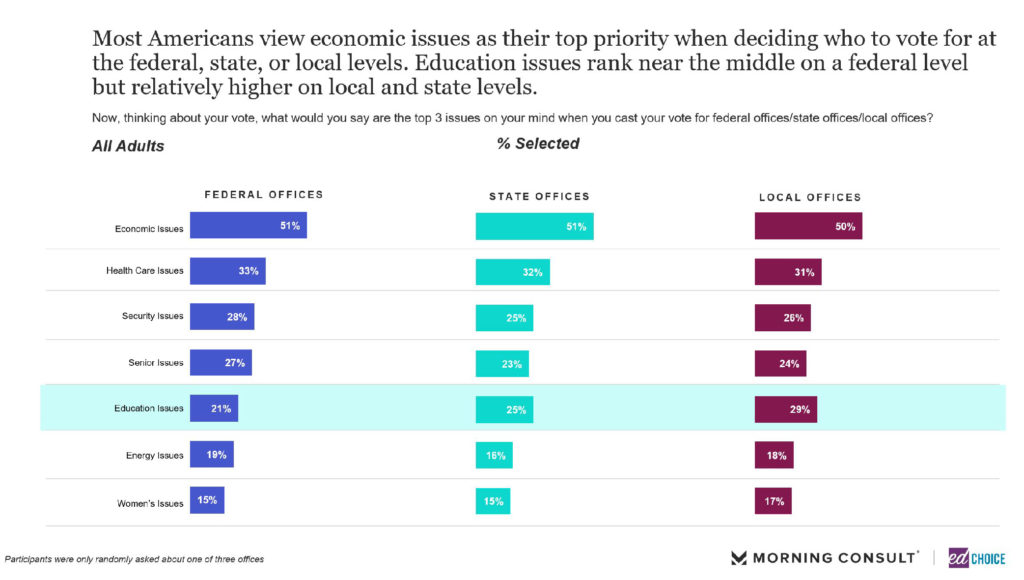
6. Willingness to pay for learning pods is on the rise again. In the spring semester of 2020-21, we learned not only that an increasing number of parents were interested in learning pods—the share of families in or looking to be in a learning pod increased each month from January to April 2021—but parents also were willing to pay an increasing amount of money over that time as well, peaking at $592 per child per month in April 2021. That dollar amount tapered off as the school year ended and summer break began.
But as the new school year is well under way, we have seen two consecutive months of growth pod-inclined parents’ willingness to pay to participate. In November, the average willingness to pay for learning pods increased to $448 per child per month. Much of this growth appears to be driven by parents with annual household incomes over $75,000, as that group has a substantially higher willingness to pay than parents with lower incomes. This is in contrast to the pattern we saw earlier this year, where there was relatively little difference in the willingness to pay among parents interested in pods across income levels.
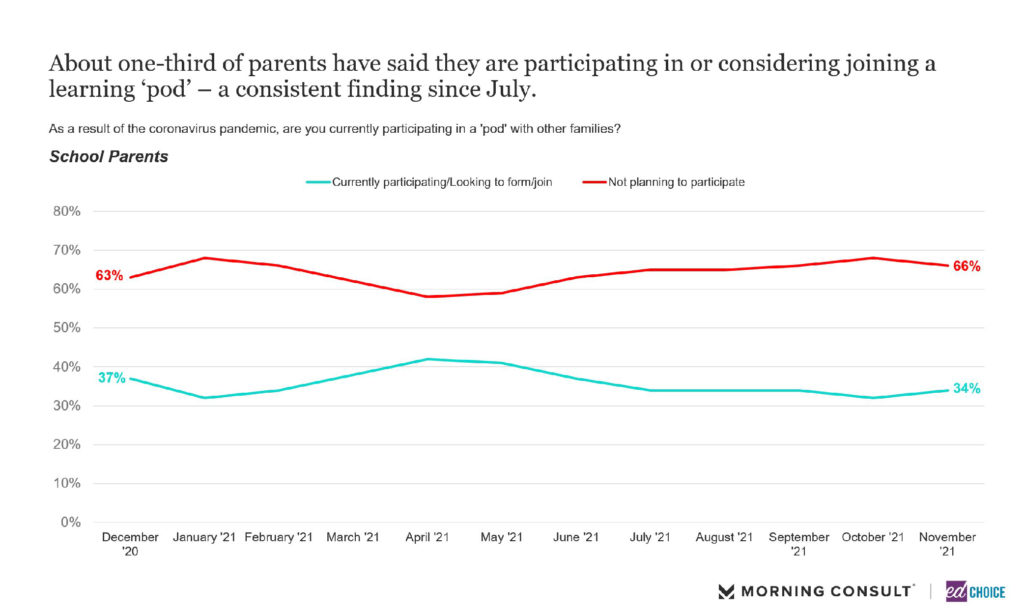
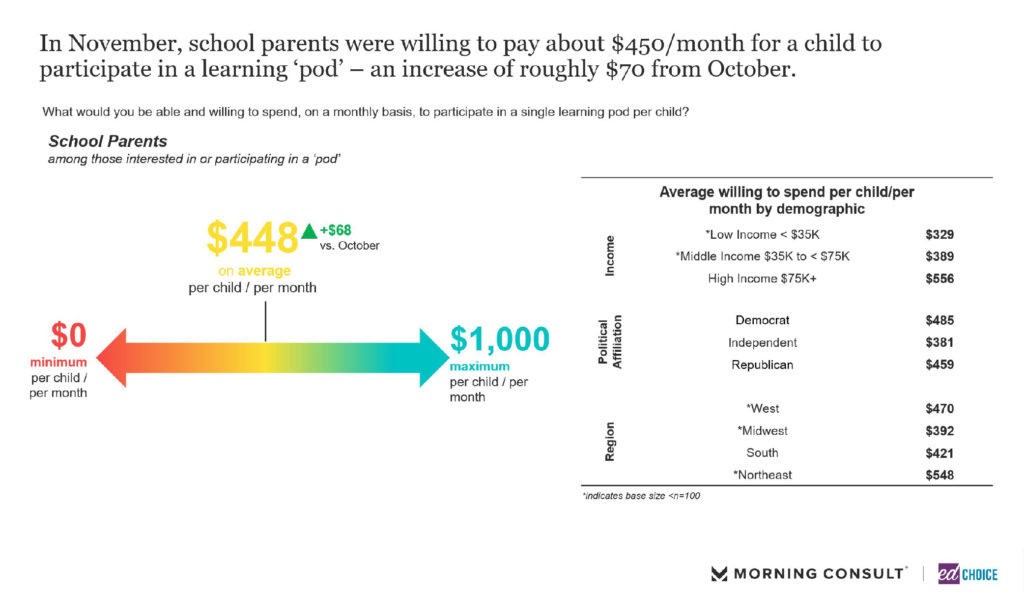
7. School choice remains a popular policy. Among all adults, 68 percent support education savings accounts (ESAs). Parents view ESAs more highly than the general public with 78 percent indicating support. Those from households with over $75,000 in annual income, who are Black, or identify as Democratic are the non-parent groups most likely to support ESAs.
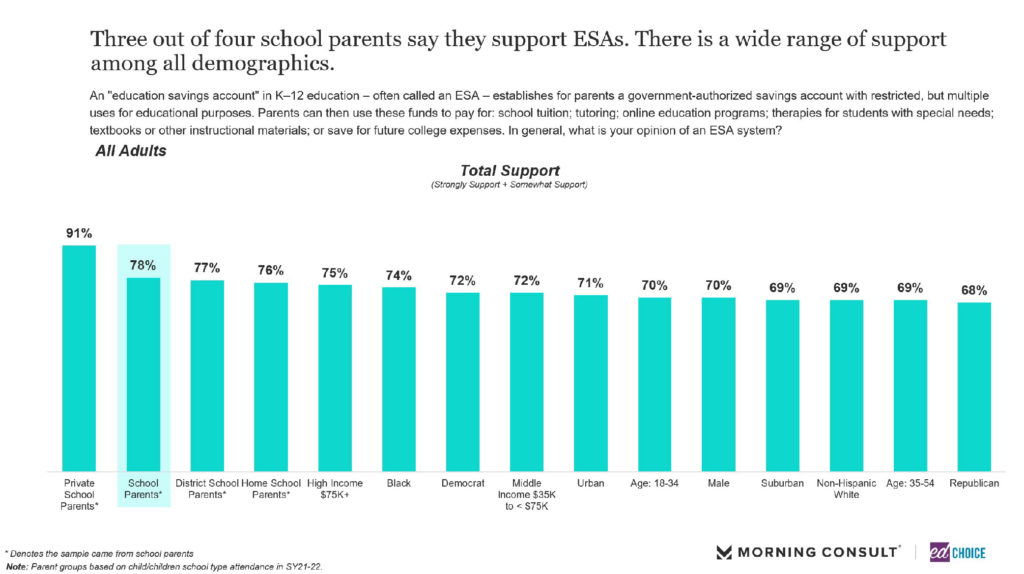
Sixty-two percent of all adults and 71 percent of parents support school vouchers. Black and higher-income respondents were again especially likely to support this school choice policy, but this time, Republicans were the non-parent group most likely to support school vouchers.
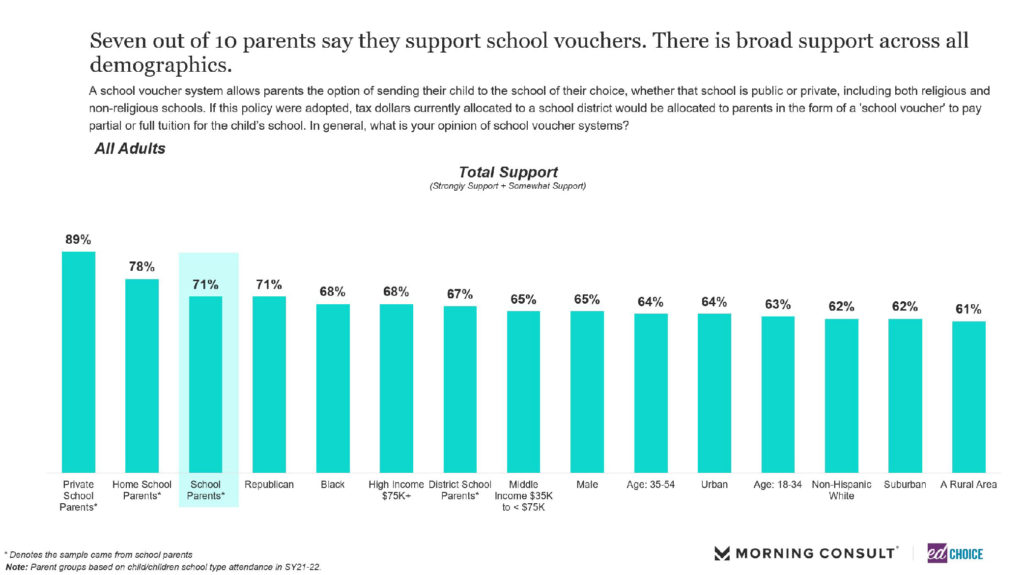
Sixty-five percent of all adults and 73 percent of parents support charter schools. Once again, Black and higher-income Americans were particularly favorable to charter schools. Urbanites were noticeably more favorable to charter schools relative to their peers compared to the other two school choice policies we presented.
